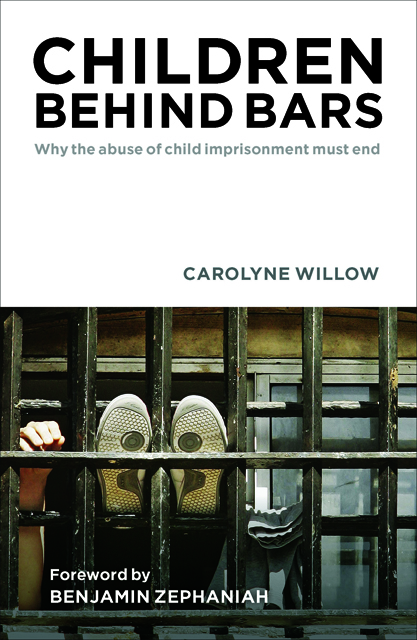Book contents
- Frontmatter
- Contents
- List of tables
- About the author
- Acknowledgements
- Preface
- Foreword by Benjamin Zephaniah
- one Introduction
- two ‘Things were not right at home’
- three ‘They just don’t listen’
- four ‘I think it’s quite like rape’
- five ‘I can’t breathe’
- six ‘What gives them the right to hit a child in the nose?’
- seven ‘We should be able to hug our families’
- eight ‘Every night I’m starving’
- nine Children were ‘given bags to urinate in’
- ten ‘The violence is unbelievable’
- eleven ‘Listen to the kids’
- twelve They shouldn’t be there
- Notes
- Index
five - ‘I can’t breathe’
Published online by Cambridge University Press: 15 April 2023
- Frontmatter
- Contents
- List of tables
- About the author
- Acknowledgements
- Preface
- Foreword by Benjamin Zephaniah
- one Introduction
- two ‘Things were not right at home’
- three ‘They just don’t listen’
- four ‘I think it’s quite like rape’
- five ‘I can’t breathe’
- six ‘What gives them the right to hit a child in the nose?’
- seven ‘We should be able to hug our families’
- eight ‘Every night I’m starving’
- nine Children were ‘given bags to urinate in’
- ten ‘The violence is unbelievable’
- eleven ‘Listen to the kids’
- twelve They shouldn’t be there
- Notes
- Index
Summary
Public disclosure of the child abuse perpetrated by former disc jockey and television presenter Jimmy Savile has led to wider questions about the treatment of vulnerable children living away from home. BBC Newsnight, pilloried for dropping an investigation into Savile, interviewed an adult who alleged a former senior politician had sexually abused him when he was a child in Bryn Estyn children’s home in North Wales. This was subsequently retracted, although, for a short period, the media held its gaze on the past abuse of children in North Wales’ children’s homes. A BBC journalist made a freedom of information request for the 1996 report that had never been made public for fear of compensation claims. The six councils that replaced Clwyd County Council published the Jillings report in July 2013. It starts with a review of the changes in children’s residential care across the 1970s and ’80s:
Indeed, the whole concept of aggregating deprived, disturbed and delinquent young people into large residential establishments, often remotely located in rural areas, came to be seen as inappropriate.
The closure of community homes with education, which, like Bryn Estyn, had formerly been approved schools run by the Home Office, represented a major shift in professional thinking about the care and containment of vulnerable children. The report continues: ‘Eventually Bryn Estyn, too, closed its doors as part of society’s long overdue shift in thinking away from large institutions.’
Contrary to John Jillings’ analysis 20 years ago, vast, impersonal establishments are still in use. The capacity of children’s homes has contracted enormously, frequently accommodating fewer children than the average foster family. However, young offender institutions, where the majority of detained children are held, have residential units (or ‘blocks’) holding between 30 and 60 children and sometimes over 90. Europe’s largest child prison – Hindley young offender institution in Wigan – can hold 440 children, 100 more than Great Ormond Street Hospital. In the latest inspection report on this institution, the chief inspector of prisons expresses alarm at the proposal to close one of its smallest units (holding up to 13 children with the most complex needs), stating this ‘would be a reckless and dangerous development’. In January 2014, the coalition government announced that its first secure college would be located on the site of an existing prison in Leicestershire and hold 320 children aged between 12 and 17 years.
- Type
- Chapter
- Information
- Children behind BarsWhy the Abuse of Child Imprisonment Must End, pp. 99 - 120Publisher: Bristol University PressPrint publication year: 2015



